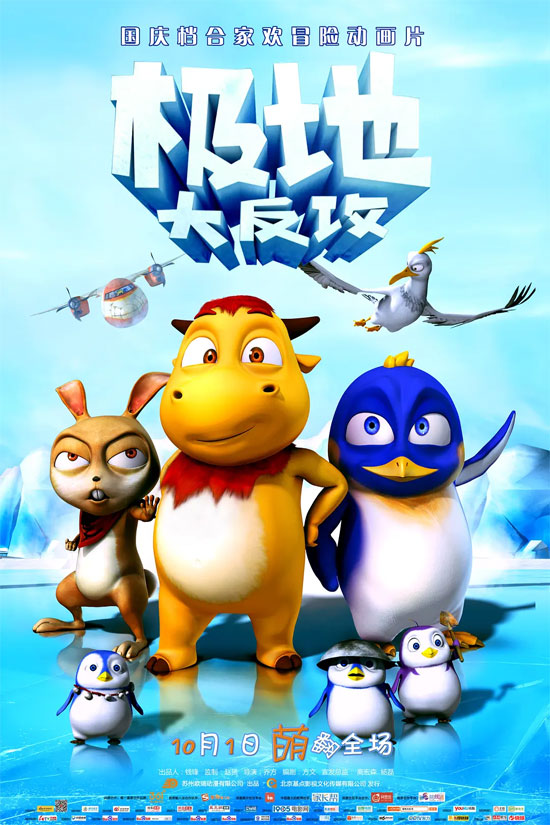Film Name: 极地大反攻 / Polar Adventure

This animated film was not highly anticipated during this year’s National Day holiday season. After several days in theaters, it not only underperformed at the box office but also received sparse online reviews. Particularly concerning is that the film is based on a four-year-old TV animation series, “Ouliniu and Diliyang,” whose reach and brand recognition clearly failed to generate any positive buzz for its theatrical release. In fact, viewers familiar with the original series might be less inclined to see this film, having already experienced ample stimulation from the television version.
That said, the film does tell a relatively complete story. Its plot is sufficiently intricate, featuring a rich cast of characters exploring themes like family bonds and friendship. It portrays innocent friendships between animals of different species, sincere emotions among members of the same species, and even a reversal in the attitudes of the bird tribe. Following Happy Feet Two, this domestically produced animation—centered on Antarctica and penguins—shows noticeable gaps in character design and production techniques. Yet we might say it has created a domestically produced penguin cartoon character with nascent star appeal.
Of course, the inclusion of the protagonist yak Ou Li and rabbit Lei Ke in this adventure feels slightly jarring visually. However, the film gives them distinct personalities and goals, which somewhat redeems their presence. Especially Lei Ke’s dream of finding Bruce Lee makes him a memorable character.
The film’s most compelling segment is the counteroffensive in the latter half. Despite various simplifications, it still keeps audiences thoroughly engaged. This appeal likely stems from the rescue mission’s twists and turns, the cleverly comedic rescue sequences, or the ensemble perspective that incorporates every character. In short, the film lives up to the name of its “Great Counteroffensive” battle.
The ultimate antagonist of the film is Dr. Giko, another villainous female character. We’ve seen many such figures before—like the policewoman in Madagascar 3 or the museum owner in Paddington, who happens to be a taxidermist. If the film had portrayed Dr. Giko not only as intelligent but also as capable of independent action—much like the villains in Madagascar 3 and Paddington—she would have felt more like a true villain, rather than merely relying on two dim-witted henchmen to do her bidding.
In truth, the film never clearly explains why Dr. Giko’s search for methane hydrate as a new fuel source in Antarctica is inherently problematic. While she employs deceptive and kidnapping tactics, the film fails to establish a convincing connection between methane hydrate extraction and Antarctic environmental protection. This leaves audiences feeling that the two shouldn’t be mutually exclusive—they could coexist. The true win-win path would be extracting methane hydrate under conditions that preserve the Antarctic environment and the habitats of penguins, seagulls. This approach would represent a truly win-win, mutually beneficial path.
The notions that human nature is inherently evil and that humans are enemies of the environment seem deeply ingrained in the DNA of contemporary Chinese animation screenwriters. Yet human utilization of nature and environmental conservation are not inherently mutually exclusive. Development need not preclude protection and restraint; pursuit of profit need not extinguish kindness. Regrettably, these more profound themes remain largely unexplored.
Whether depicting humans conquering nature (represented by small animals) or nature (small animals) exacting revenge on humans, neither should be our ultimate narrative goal. Just as the penguin colony ultimately resolved its internal conflict harmoniously, and the penguins cleared up misunderstandings with Olli and Rik, the Confucian ideal of valuing harmony suggests that the true message we should convey to young audiences through film is the harmonious coexistence between humans and nature.
Please specify:Anime Phone Cases » Polar Adventure 2015 Animation Film Review: Let there be less counterattack and more harmony.